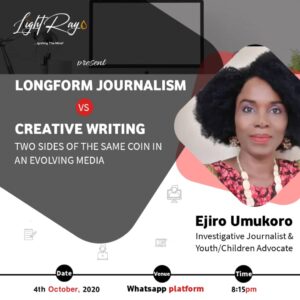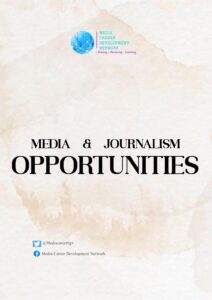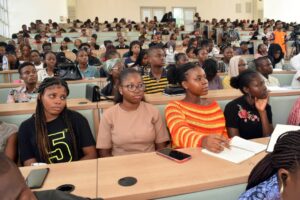“In the media parlance, especially in the broadcast industry, it is often said that content is king. From my experience as a broadcaster, journalist, speaker and writer, I have come to know that Context Is Queen.” – Lady E. 2005
That was the opening statement of Media trainer and multi-media consultant, Ejiro Umukoro during the LightRay Media Training and Mentoring Programme on Whatsapp held on Sunday, October 4, 2020, with the theme: Longform Journalism Vs Creative Writing: Two Sides of the Same Coin in an evolving media.
“Content,” she says “gives birth to the story, the story is not told without creativity and that’s the soul of journalism. In fact, without context, there’s no need to dig up facts, data, statistics, pictures, create infographics, etc.
“Journalism without humanization blended with facts, truth, happening events, indisputable knowledge becomes just information without a heartbeat. It’s the human readers see, it’s what makes them care they hear,” she explained during the training on Sunday.
Running Thread
In every narration, there is what is known as a running thread: the story –- the sequence of events the writer focuses our senses on. But one might wonder why do some journalists’ stories take people’s attention while others’ don’t? The answer is simple. It is in the narration.
ART: DEALING WITH FACT AND FICTION
In journalism, a reporter tells what happened (fact), who did it happen to? (truth), where did it happen? (anecdotes, i-witness account, etc.,) how did it happen? (indisputable knowledge) why did it happen? (the event itself, news or current events, etc.)
Umukoro, however, explained that “Creative writing is a blend of imagination, fiction, art, and dare I add some good dose of storytelling based on facts, collected data, anecdotes, knowledge, etc., that is ‘concocted’ to create a powerful story, the heartbeat of powerful writing.

“While imagination can become manifest in life and can become a journalistic pursuit when it impacts life, society, and survival in real life, it is interesting to note that this lack of imagination is exactly what differentiates creative writing from Journalism.
“However, both use the art form of storytelling to give ‘life’ and ‘humanization’ to give POV (point of view, depth, richness, context, etc.,) to the story at hand,” she stated.
She goes on to show that “in creative writing, Real Life Crime has become a genre of Crime Fiction where art mirrors life as it happened based on facts. So that a crime reporter of today has a strong chance of becoming a great crime fiction writer with a honed writing/editing craft and a strong background in crime reportage, courtroom intrigues, court rules, the privacy of victims, and exposure of offenders.”
THE CLINCHER
But what is the connection between both types of writing? Umukoro explains: “Creative Writing and Journalism have many areas of overlap. The reason for this overlap is because, just as creative writing has many genres so does journalism, the only difference being that one is more factual (Journalism) than the other (Creative Writing).
“What’s most fascinating about creative writing and journalism is that both styles employ the same form (literary and creative) to inform, educate, entertain, or report.
“That’s why in Journalism as with creative writing, we have different genres exploring forms like Creative nonfiction or Longform Journalism, Narrative Journalism, Feature Journalism, and Documentary Journalism.
“These forms (way of writing) of journalism use the tools and literary devices used to write creative fiction to write nonfiction in a literary and creative way. It is a powerful literary device or means to pull readers in, humanise a story or tell a story in a way that would otherwise not inspire people to read using accurate and true-life narratives to report an issue.”
At a point during the training, she addressed an unspoken concern. “I know you have been thinking if we can combine the two to print a factual story in a powerfully compelling way. Yes, we can do that.”
Lady E adopted this style in her investigative series: Broken Girls and Broken Boys Trapped Under COVID-19 published by the Guardian (https://m.guardian.ng/features/broken-girls-and-broken-boys-trapped-under-covid-19-lockdown-part-ii/amp/) and amplified by the Pulitzer Center in the USA doing a special backstory on her investigative series: https://pulitzercenter.org/blog/behind-story-ejiro-umukoro-nigerias-shadow-pandemic.
It turns out that the two sample writing are excerpts from Umukoro’s about to be released mental health crime novel Distortion to be launched on 13th October.
[A week before the lockdown was declared in Abuja, a 16-year-old girl was beaten with a knife and stabbed repeatedly with a pair of scissors by her aunt, Juliet Nnadi, an officer with the Nigeria Civil Defence Corps (NCDC). The 16-year-old, according to neighbours, was brutalised by her aunt and went through untold hardship.
“Many of the neighbours told us that the screams of Uloma being beaten daily usually woke them up,” Taiwo Akinwade, the Coordinator of Stop The Abuse Against Women, a non-governmental organization based in Abuja, explains to me. Akinwade said she and her team visited Lugbe, the neighbourhood in Abuja where Nnadi lives to investigate the case.
“The locals cannot believe the teenager is a niece to the perpetrator because oftentimes the officer denies Uloma from going to school and makes her stand under the sun,” says Akinwade.]
Enjoy the rest of the story on the Guardian (https://m.guardian.ng/features/broken-girls-and-broken-boys-trapped-under-covid-19-lockdown-part-ii/amp/) and await the next parts of this class.
Muhyideen Kolawole is a student journalist, final year student of English Language, and an African Liberty Writing Fellow.



